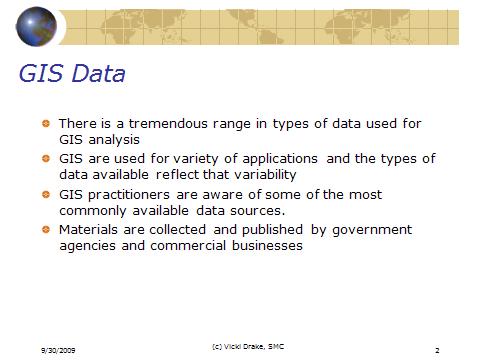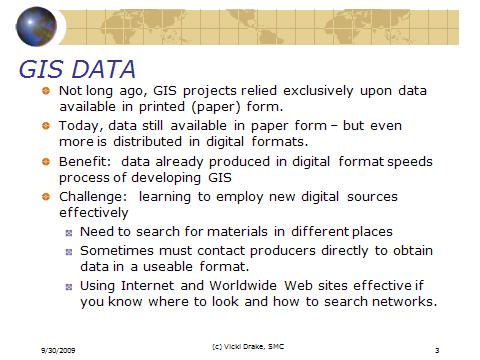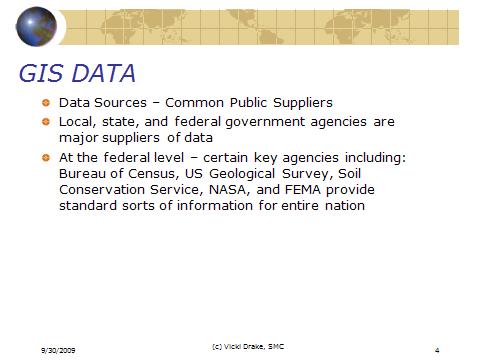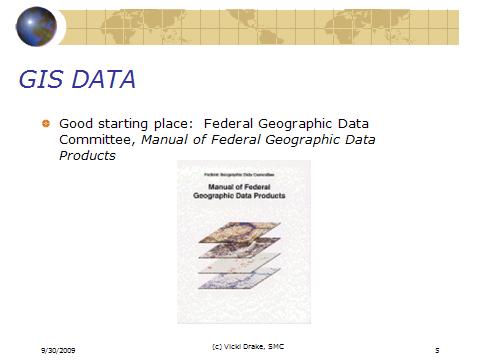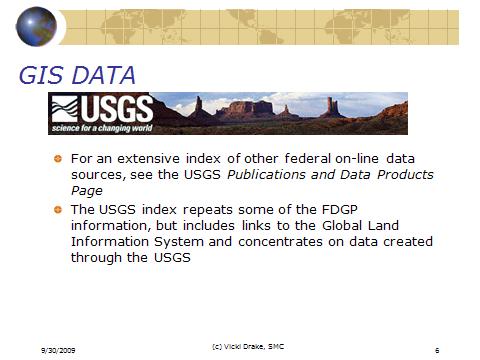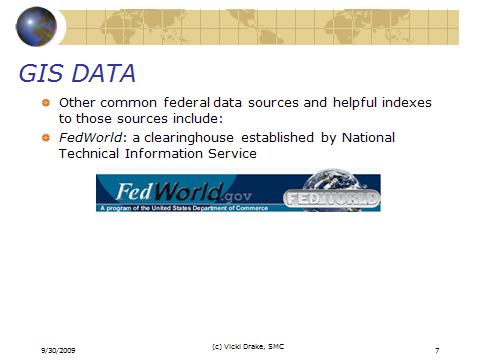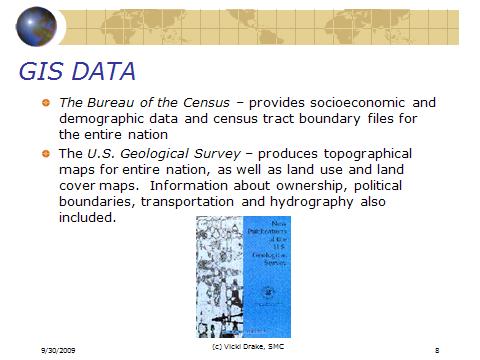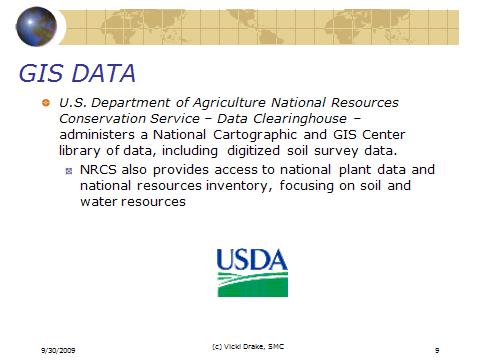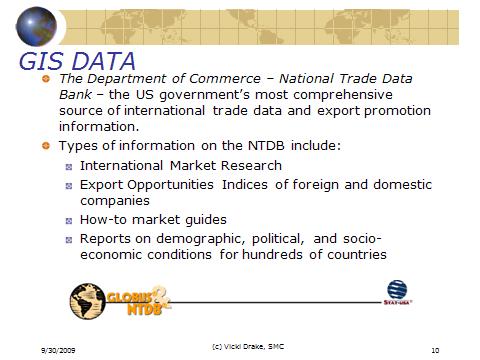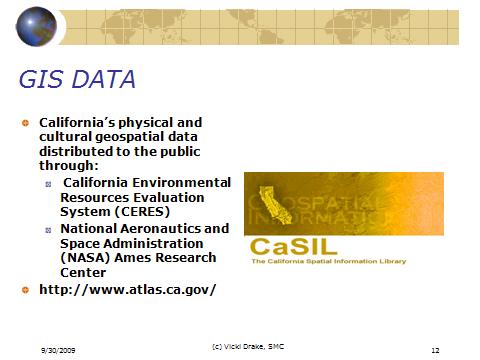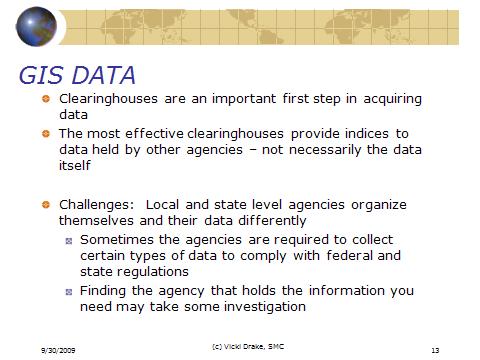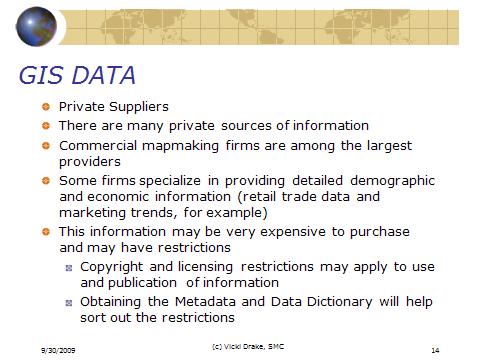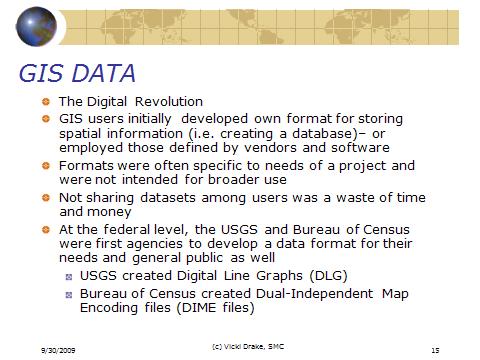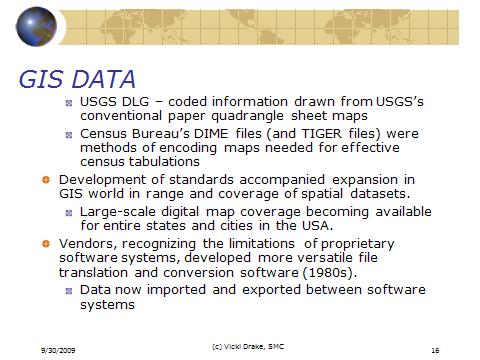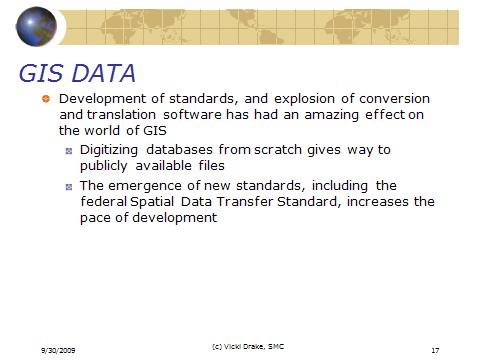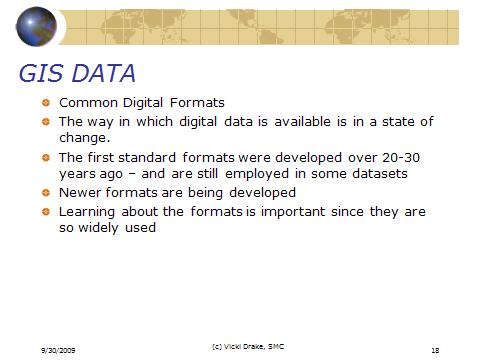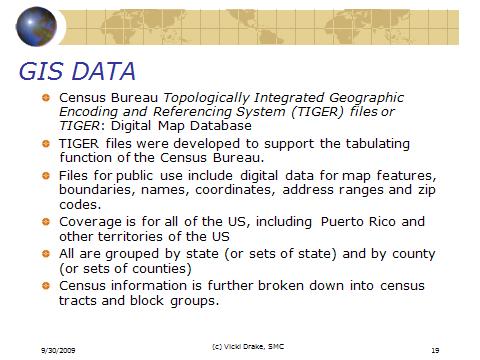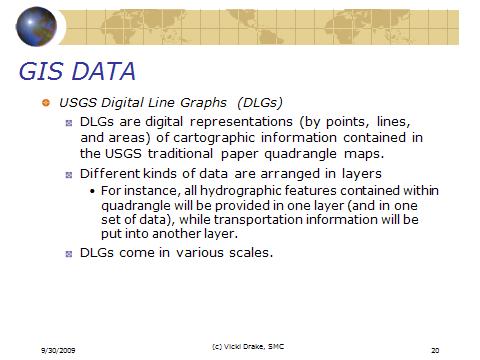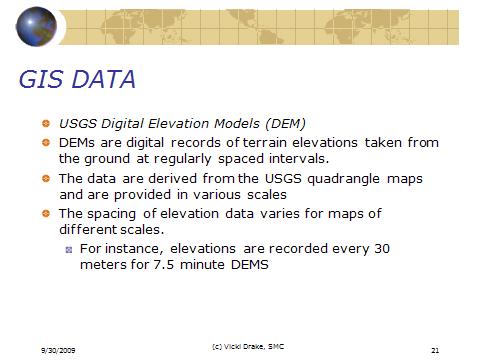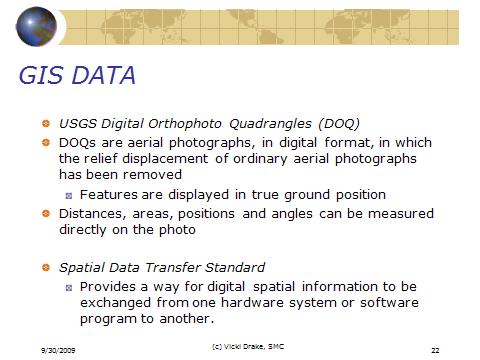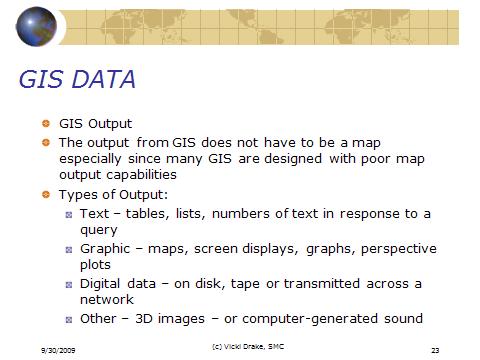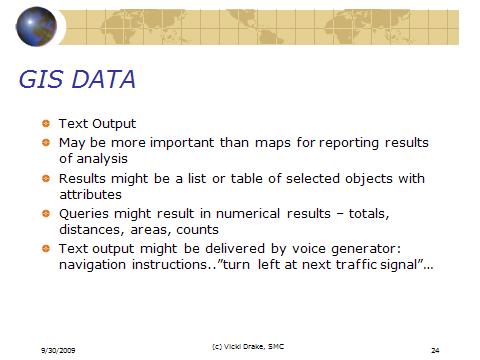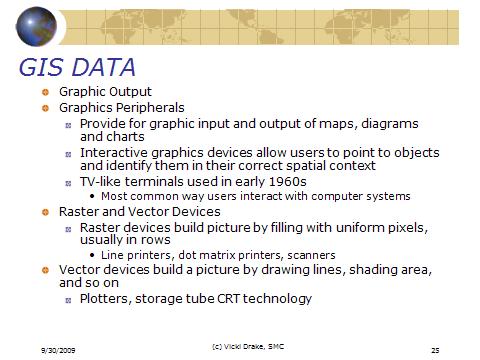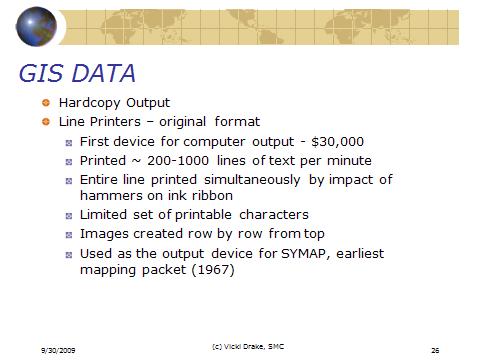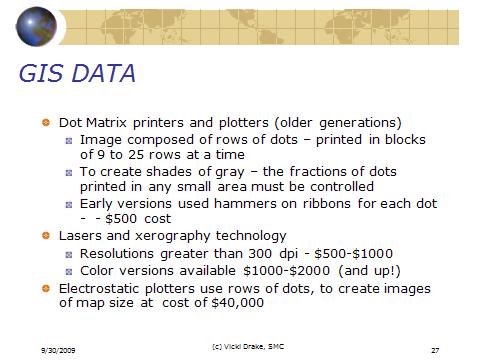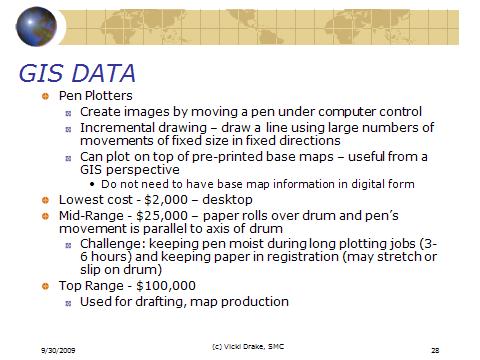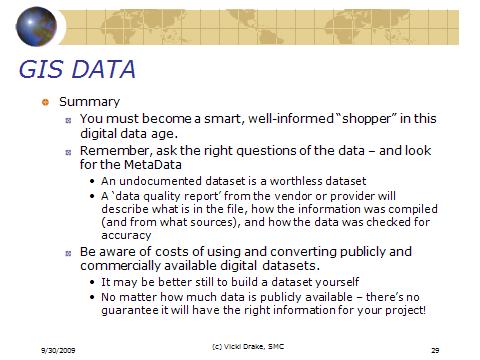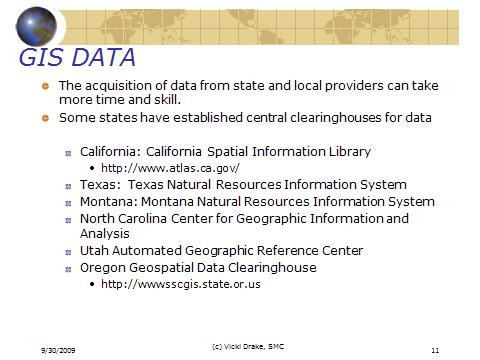 | GIS DATA |
|
|
|
|
|
|
|
|
|
|
|
|
|
|
|
|
|
|
|
|
|
|
|
|
|
|
|
|
What types of data does a GIS need to
represent?
n Continuous
Data takes on a wide range of values
Data values do not represent themes or classes,
but rather a specific variable
E.g. Elevation= 4.534 m
n Discrete/Thematic/Categorical
Feature represents a discrete class
E.g. Interstate highway, Forest, Tree stem
Data stored is a code that represents a class
E.g. 1= oak, 2=maple, 3=hickory
Images
Form of continuous data where the
variable being represented is brightness
Can include multiple bands representing
brightness in different spectral ranges
Raster
Break the area being represented into
pixels (picture elements)
Assign each pixel a value that may
represent continuous or discrete values
Vector Representations
n Use points and lines to represent
features. Polygons are represented by
boundaries
n Vector
Points
Lines
Polygons/Areas
Regions
Raster vs. Vector
Cluster of
pixels
Cluster of
pixels
Raster Single Pixel
Boundary
Only
Dimension- Length
less
Vector
Type Points Lines polygon
Raster
Resolution
determined by pixel
size
Efficiently represents
dense data.
E.g. Elevation
n Vector
Resolution determined
by precision of
coordinates
Efficiently represents
sparse data
E.g. House locations
Advantages
Easy creation from
image data
Easy to overlay
Efficient storage for
dense,
heterogeneous data
n Disadvantages
Must pre-define
spatial resolution
Requires large
amounts of storage
space
Inefficient when data
is sparse or
homogeneous
Deals poorly with
linear features
Advantages
High resolution
Works well with
boundaries
Explicit
representation of
linear features
Efficient storage of
sparse data
n Disadvantages
Manipulations
require sophisticated
algorithms
Processing can
require lots of
computer time
Inefficient storage of
dense data
Tools for Raster/Grid Data
n Spatial Analyst provides raster
processing capabilities in ARCGIS
n The Raster Calculator is a powerful tool
for combining data layers to produce
new raster data layers
The Power of Raster
Analysis of raster data is particularly useful
for:
n Determining least-cost paths for traversing
a landscape without roads
n Modeling habitat requirements for species
n Working with elevation or bathymetric data
n Summarizing characteristics of areas
n Analyses where variations in proximity are
important
